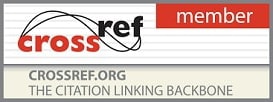P-ISSN: 2349-6800, E-ISSN: 2320-7078
Journal of Entomology and Zoology Studies
2018, Vol. 6, Issue 6
Comparative efficacy of different insecticides and estimation of yield losses on BT and non-BT cotton for thrips, red cotton bug, and dusky cotton bug
Sana Ullah Malik, Khurram Zia, Maria Ajmal, Rana Fartash Shoukat, Shuzhong Li, Muhammad Saeed, Junaid Zafar and Rana Fartab Shoukat
Cotton (Gossypium hirsutum L.) is the world’s leading fiber crop for textile industry in many countries. Pakistan ranks 4th in cotton production worldwide. Cotton is notorious for being susceptible to many diseases. Bt cotton is mainly affected by sucking pests after a decrease in the intensity of pesticides. The following study has been planned to check the effect of different doses of pesticides. Three neonicotinoid insecticides (nitenpyram, imidacloprid, and acetamiprid) and a same number of conventional insecticides (profenophos, λ-cyhalothrin and bifenthrin) are used to be checked. Their effect is checked on sucking insect pests in the cotton field. RCBD (Randomized Complete Block Design) is used to arrange the seven treatments containing six insecticides and one control treatment with three replications each. The data of three sucking insect pests, red cotton bug, thrips, and the dusky cotton bug was recorded after spraying at the interval of 24, 72 hours and 7 days from each plot. Insect infestation was maximum before spray but there was a noticeable reduction after the application of the spray. Best results were given by Acetamiprid against thrips after one week of application followed by Nitenpyram and Profenophos. Against Dusky, Cotton Bug Nitenpyram was most effective followed by Profenophos. While for Red Cotton Bug after one week of application, Imidacloprid gave better results followed by Lambda.
Pages : 505-512 | 864 Views | 410 Downloads
How to cite this article:
Sana Ullah Malik, Khurram Zia, Maria Ajmal, Rana Fartash Shoukat, Shuzhong Li, Muhammad Saeed, Junaid Zafar, Rana Fartab Shoukat. Comparative efficacy of different insecticides and estimation of yield losses on BT and non-BT cotton for thrips, red cotton bug, and dusky cotton bug. J Entomol Zool Stud 2018;6(6):505-512.
Related Journal Subscription
Important Publications Links
Important Links










